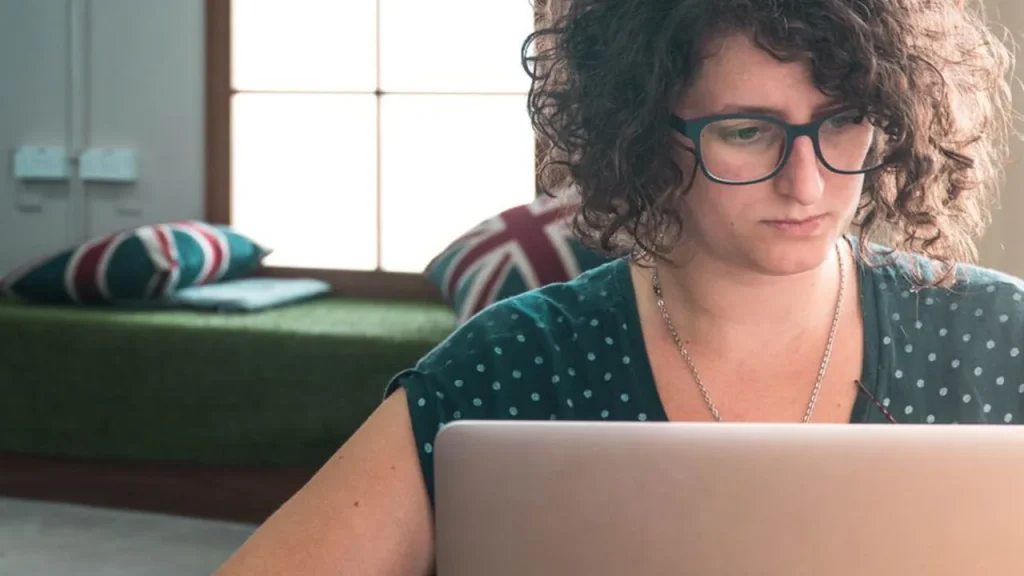Freelancing is becoming increasingly popular. Especially after lockdowns, when people realized working from home as a freelancer has benefits a regular office can’t match: freedom and flexibility.
Freelancers can work from home, set their own hours, and take on as much or as little work as they want.
It truly is “being your own boss”.
In this guide, you are going to learn how to freelance and build an online business according to your goals and skills.
What is freelancing?

Freelancing is a working methodology where instead of working as an employee, you offer services independently to a variety of clients.
More and more people opt for this way of working in search of financial independence and freedom.
Freelancers can be:
- People who possess high-demand skills.
- People who seek their own clients, and work on several projects at the same time.
- People who value the freedom to work independently and want control over their lives.
However, those who choose to be self-employed are looking for more than just not having to work 9-to-5.
They are mothers and fathers who know that spending more time with their children is priceless.
Travelers who know that a job doesn’t have to tie them to one place.
Or simply people who don’t want their work to depend on anyone.
Freelancers are a new workforce that is redefining success and changing the global economy based on personal freedom, proving that you don’t have to work in an office to make a lot of money and have a life you can be proud of.
Who can be a Freelancer?
Anyone with an in-demand skill can be a freelancer.
Having a successful business depends on being able to offer real solutions to real client problems. The key is to provide value.
That said, freelancing is not for everyone. A business is not built overnight, and having skills alone is not enough to be successful.
Types of freelancers
1. Independent Contractors
They are the largest freelance group. They work on a project-by-project basis and are what is considered a “traditional freelancer”.
2. Multitaskers
These freelancers work on their projects at night while still keeping their traditional full-time job. While this form of work guarantees a more stable income, it requires a lot of discipline to balance traditional work with sporadic projects.
3. Temporary workers
This category is reserved for freelancers who are hired by a company on a temporary basis to work as full-time employees without being regular employees.
4. Business owner
This freelancer is one who has outgrown their one-person business and needs to hire other freelancers to keep their business growing.
How to start Freelancing

The first step to being your own boss isn’t writing a business plan. Nor is designing a logo. Much less print business cards, or invest money in ads.
All it takes is finding someone willing to pay for a service you can offer.
Do you know graphic design? Companies of all kinds are constantly looking for designers to help them with their brands.
Do you know how to play the guitar? Many people are willing to pay for someone to teach them.
Are you good with administrative tasks? Having an online assistant is a necessity for many businesses.
The best way to know if a business idea is good is to apply common sense. Why risk investing time and money in something that may not work?
What services can you offer?
You may have several services to offer and it may be difficult to decide exactly what to do and for whom.
As a self-employed person, defining your offering and your niche is essential to having a solid business with growth potential.
Choosing a niche will shape the services you sell. However, it’s more complex than just thinking about demographics. You need to find what are the needs of your niche, craft a solution to their problems, and see if they have the resources and willingness to pay for that solution.
The following exercise will help you get started.
1. Write a list of business ideas, and who the customers would be.
It should look something like this:
| Idea: | Client: |
| Social Media Manager for small business | Local small business owners. |
| Cooking teacher | People who are just starting out on their own |
| Web designer for healthcare companies | Healthcare companies |
2. For each person in the second column, ask yourself:
- Do they have the means (money) and are they willing to pay for this service (Demand)?
- Do you have the knowledge and willingness to provide this service (Supply)?
If both answers are positive, then you are on the right track.
For example, do local small business owners need someone to manage their social media? They usually don’t invest money in this type of service, and they don’t need to: they get customers mostly by word of mouth. Not a good idea.
For most people living on their own for the first time, learning to cook and have a balanced diet is a necessity. The problem is that not everyone has the money to pay someone to teach them, or a lot of them learn it by looking up recipes on YouTube. Bad idea.
Do heath-related businesses have money to pay for design services? Yes, these companies usually have good monetary resources. Are they willing to pay for a website? Probably, as it would save them time and money in dealing directly with clients by other means. It’s an idea worth exploring!
How do you find customers?
Now that you have a good idea, it’s time to find your first customers. There is no business without clients!
But these people don’t magically show up because you promote yourself on social media, pay for ads, or have a website.
The most direct and effective way to reach them is simple: write to potential clients with the intention of selling them your services. Finding these people is easy thanks to the Internet.
Create a list of potential customers and send them an email or message offering your services. But be careful! Don’t try to close a sale in that first interaction.
Simply invite them to learn more about what you offer through an online call or meeting. Getting clients is all about creating human relationships.
An effective email has to solve 3 questions for the potential customer:
- Who are you? Why should they care?
- Do you know what you are talking about or are you phony?
- What does the customer gain from this?
An example of a good first email is:
Subject: I want to help you sell more Pots through Facebook.
Hi Mary,
I love the products you sell, especially the Pastry line. Thanks to your pans I can now make cakes that are the stars everywhere I go.
I am a digital marketing specialist and would love to help you sell more products. I specialize in selling through Facebook with good results and little investment.
I would be interested in helping you get more customers, because I think your products are great. I’m sure you are too busy to take care of Facebook marketing and I can take care of that for you.
You can contact me at ####, or just reply to this email. If you want to know more about the projects I work on, I invite you to visit my website www.url.com.
Thank you!
The real advantage of this system is that it allows you to validate your idea quickly.
If you write to 100 people but none of them reply, maybe your idea is not good or your message is not clear.
However, if you hear back from 5 or 10 people, then you know you have something to work with.
Focus on getting at least 3 paying customers for your services. Don’t worry about how much to charge at this point. Getting started is the important thing; you can always modify your rates later.
How much to charge?

Knowing how much to charge to make a living exclusively as a freelancer can be intimidating.
You have to think about your competitors, what are the market prices, how can you compete with people charging $2 an hour, what payment platform is the best, and how much you can effectively ask your customers.
How much to charge is closely tied to your business model: do you prefer to work with a few large clients who pay a lot, or have multiple projects that pay little? Establishing this will also define the type of clients you will attract.
The first step in figuring out how much to charge is to figure out how much money you need to make in order to support your lifestyle.
Keep in mind that having a freelance business is not free. There are expenses for equipment, services, etc. Not to mention that as a freelancer, you also have to take care of many costs that used to be paid by your employer.
Be sure to make a comprehensive list of all your expenses per year.
Your business costs:
- Co-working/office space
- Hosting and domain
- Internet
- Accounting/accounting software
- Project management tools
- Smartphone
- Computer
- Promotion and marketing
- Software
- Taxes
- Cost of living
- Social welfare
- Rent
- Food
- etc
Having a minimum annual expenses projection is an excellent basis to know how much money you have to earn each month. Add ‘extra’ expenses such as vacations, recreation, etc. And finally, your ideal annual salary: the one you want to reach.
When you know how much money your business has to generate to cover all your expenses plus the extra amount of profit you want, you will be ready to choose how to charge: per hour, per project, or per value.
Ways to budget
Hourly
Getting your hourly rate is easy: you simply divide your annual salary by the number of billable hours in a year (working hours minus hours spent on vacation, marketing, own projects, meetings, etc).
For example, let’s say my business has to make USD100,000 per year. I work 40 hours per week, that is 2080 hours per year, from which I have to subtract vacations (3 weeks = 120 hours), sick days (5 days = 40 hours), and days off or holidays (7 days = 56 hours). In other words, 216 hours must be subtracted from the original 2080 hours, which gives us a total of 1864 working hours.
From this number, you must also subtract the amount of non-billable hours invested in your business (meetings, marketing, emails, etc). It is estimated that 25% of those hours are not billable, giving us a total of 1398 billable hours per year.
If I divide the annual salary of $100,000 by the 1398 billable hours, I get an hourly rate of approximately $70 per hour.
Per project
Charging per project (or package) assumes a fixed price depending on the type of work. For example, if you make websites you can charge each website with the same requirements at USD5000.
In this model, the math is different. Instead of thinking about how many hours you have to work, you think about how many websites you have to sell to reach your ideal number. Be careful! Don’t forget to take into account how long it will take you to make them.
Per value
Finally, you can choose to arrive at a rate by the value the project has for your client. This way of budgeting is the most complex but allows you to make the most profit. In this case, the price comes from the value of the project for the client, and not only what you need to charge to reach your goals.
For example, if a client has an online store where his average monthly sales is $100,000; but you can boost that number by 25% per month with a redesign, it means that your successful project increased your client’s sales to $300,000 more per year. This gives you the possibility to budget the project based on the results of your work, without having only your annual needs into consideration.
You should know: there is no “right” way to price your work. All the options have positive and negative things. It is up to you to evaluate which one best suits your goals.
Working for free when starting out
There are many different opinions when it comes to working for free. Many freelancers argue that if you are just starting out, working for free is a good way to get clients.
Working for free is good as long as you are strategic about it.
Don’t work for free for an established company. If they’ve been in business for a while, it means they can pay you.
Charities and NGOs are an excellent opportunity to offer your services for the greater good while creating another piece for your portfolio.
If you are working for free make sure it is within the niche you want to work for.
It is very important to set limits when you offer your services for free. Be clear on what is included and what is not, and be sure to tell them the real price of your work. It may also be an opportunity to ask for something other than money in return, such as testimonials, advertising, or recommendations.
The idea of working for free – that is, with no money exchanged – is that both parties still come out ahead in a fair way.
The skills you need as a Freelancer

Once you start working from the comfort of your own home, you’ll realize how amazing – and dangerous – it is to have total control over your time.
It’s all too easy to waste your entire morning on Facebook, paperwork, or even doing household chores.
At the end of the day you’re going to find yourself with a mountain of unanswered emails, the deadline even closer, and you’re going to be forced to spend all night in front of the computer to get everything done.
To be a successful freelancer, you need to develop strong discipline and fight mercilessly against distractions.
Beyond the specific skills of your profession, anyone who wants to be a freelancer needs to know how to be productive.
How to work: productivity and habits
It’s not uncommon to find freelancers who work 24 hours a day. But let me make it clear now: that’s not the freelance ‘lifestyle’.
It’s simple mismanagement of time and resources.
The key to being productive and fulfilling your obligations is to create a routine that suits you.
It’s time to get to know yourself: do you work better by focusing intensely for a limited time? Are you more productive at night? Do you prefer to work from home or in a co-working space?
Having a routine is proven to raise productivity levels, and creating one for yourself is the secret to fully enjoying the freedom of freelance work.
Productivity techniques
You don’t have to rely solely on your willpower to be productive. There are hundreds of techniques that can help you.
Two of my favorites are the Pomodoro Technique (for intense work over short periods of time), and Amy Porterfield’s “Tiger Time” (for longer periods of time).
Pomodoro Technique
It consists of dividing tasks into small time intervals -usually 25 minutes- with a 5-minute break between each one.
Choose the task you want to carry out. It doesn’t matter if it is big or small, just that it requires your full attention to complete.
Set a Pomodoro for 15 minutes (you can use a simple timer on your cell phone for this). Commit to working each of those minutes. If for some reason the Pomodoro is interrupted, you have to start over.
Work until the clock rings. If you think of something you need to do while you are working, simply write the idea down on a piece of paper to come back to it later.
Make a mark on a piece of paper for each Pomodoro that passes.
Take the 5-minute break between pomodoros to have a coffee, move around a bit, or do some non-work related task.
Every 4 pomodoros it is recommended to take a longer break of 20 to 30 minutes, your brain will thank you!
Tiger Time
This technique devised by Amy Porterfield consists of setting aside a large fraction of time during the day, which you are going to protect at all costs: nothing -nothing- can distract you from the goal you want to achieve.
Identify a work window during your day-morning, afternoon, or evening where you know you won’t have any distractions. Set a specific goal for that time slot, and commit to accomplishing it.
While there are no breaks like in the Pomodoro Technique, there are certain rules that will help you make the most of this time:
- No social media
- No email
- No phone. Eliminate any distractions and mentally prepare yourself to focus on only one thing.
How to meet deadlines
Want to know the secret to achieve your goals? Be accountable to yourself.
There are several tools that can help you:
1. Deadlines / Your Calendar
Many freelancers believe that deadlines are like the completion of an exam: “deliver as far as you have done”. In reality, deadlines are a tool to help you complete projects and manage your time.
There are 3 factors to keep in mind to set realistic work deadlines:
- Know the project thoroughly.
- Realistically assess the skills and tools needed.
- Have appropriate time available.
It is critical to know exactly what the project entails and what tasks are necessary to complete it. Make sure you talk in detail with your client and that you both agree on every task and deliverable, even before thinking about deadlines.
Be realistic about your skills and workspace. Know what you are capable of and be honest about it. Sometimes we think something might take 2 days when it actually takes a week. Having a clear idea of how long it takes you to do something allows you to negotiate deadlines based on facts and not assumptions.
Always give yourself a little extra space – it’s a must! I’ve never worked on a project without something unexpected happening, from getting sick or my equipment breaking.
Clients who demand unrealistic deadlines should be aware of the risks. From not being able to complete the project to having poor-quality results. As a freelancer – if you choose to work with these types of clients – it is your responsibility to make those consequences clear.
2. Accountability partner
Having someone to be accountable to is an excellent way to meet your deadlines and goals. This person will help you keep your commitments.
It can be a friend, a family member, or even a colleague.
The dynamic of an accountability partner is to set up weekly meetings where you both set goals for that week and commit to reaching them before the next meeting.
Having to “confront” your partner serves as motivation to accomplish your tasks.
3. Join a Mastermind
A Mastermind is a group of people committed to meeting on a regular basis to discuss their work, and motivate and mentor each other.
These groups thrive on peer-to-peer collaboration, giving members a chance to talk about different points of view about their work and goals. They are great for keeping each other accountable.
4. Put a price tag on it: StickK
Sometimes, the key to delivering is to put a real consequence for missing deadlines. For this, you can use StickK.
The idea is pretty simple: you propose a goal and a financial consequence. If you don’t meet it, this website donates your money to a charity you love or hate, or even to an enemy.
It’s a great idea to take accountability to the next level.
Managing e-mails and communication
Learning how to manage different communication channels is a basic skill for those who work from home. Emails, phone calls, and meetings can easily become a time black hole in your routine.
E-mail is an essential tool. As a freelancer, your inbox is likely to fill up quickly. Some of those e-mails are going to be urgent, and others not so much. It’s up to you to decide which of them deserves your attention.
Gmail has more and more organizational tools, or you can even opt for add-ons like Streak. You can categorize them according to priority or ‘pause’ them until a specific date, helping to clean up your inbox by leaving only the most important emails in sight.
Having a library of pre-designed responses also saves a lot of time. These templates can be used for meetings, confirmations, and a variety of other situations. All you need to do is copy them, adapt them to the particular situation, and you’re done.
Phone calls
There is no doubt about its benefits, but phone calls are something that can easily get out of control unless you set rules and limits.
Having office hours where your clients know they can reach you will prevent your phone from ringing in the middle of the night.
Meetings
Ask yourself if the meeting is really necessary before scheduling it. If you can communicate by another means, then don’t have it. Tools like Skype, or even email can save you from having to meet in person.
If there is no other option, set rules to make the most of it. Set a time, and an agenda, and stick to it!
Your website

Your website is the face of your online business. Usually, as a freelancer, the first thing that comes to mind when talking about a website is having a Portfolio.
But what if you could make money in several ways with your website? Having a business that generates passive income is for many a dream come true.
There are different business models that can be applied to a website.
1. Advertising
Websites with a lot of traffic use ads to earn money (usually through Google Adsense).
The concept is very simple: every time someone clicks on an ad, you get paid a few cents. The problem is that to earn good money you need to have a lot of consistent traffic.
2. Affiliates
You can recommend tools and other products on your website through blog posts or other content. When a person buys by clicking on the link you provide, you get paid a commission.
You can apply to the affiliate program of the company or tool you want to share or join an affiliate network.
This model is a double-edged sword: you can earn a lot of money, but it depends on the trust your audience has in you.
Try to recommend products that you trust and be transparent when it comes to making it clear that you will earn a commission if they buy.
3. Sell info-products
Selling knowledge in the form of ebooks, videos, or courses is an excellent way to generate income through your website.
The key is to find something that people are willing to pay to learn and create something based on that.
The world of info products is demanding and complex. I recommend that you research the different options before choosing this form of monetization.
4. Sell digital products
Do you have a bank of your own unused photos? Vector resources? WordPress themes? Email templates? Ebooks?
There are endless options to create digital products and sell them through your website. It is an excellent option to supplement your income, especially if your profession requires the creation of items that are no longer used.
How to create your own website?
You don’t need to invest millions in a website, especially at the beginning.
With very little investment and some time, you can have a solid site without the need to develop it from scratch.
There are “free” options for creating an online site. But as tempting as they are, stay away from Wix, WordPress.com, and other places where you have no real control over your own website.
The simplest option is to have a WordPress website. Yes, you’re going to have to pay for hosting and domain – and maybe a theme – but it’s a foundation that’s meant for you to grow and modify your website according to your needs and the needs of your business.
Tools for Freelancers

As a one-person business, using the right tools is going to save you a lot of headaches… and money!
There are currently hundreds of online tools – free and paid – that can help you with different aspects of your business.
The following is a list of the tools I use to keep up to date with our clients and projects.
Notion
Managing projects is very convenient with this tool.
It is very versatile: you can assign specific tasks, create content calendars, share updates, and much more.
It has both free and paid plans, but personally, I find the free version more than enough for most projects.
Payoneer
Payoneer is the payment platform I use the most to receive international payments.
It allows you to get paid from anywhere in the world in multiple currencies, and you can use a Mastercard debit card to access your balance at any time.
Hosting: Siteground
You will need to purchase hosting for your website. There are hundreds of offers online, but from my own experience, I recommend that you look for a service that simply works, and with outstanding technical support in case something does go wrong.
After trying many options, I can tell you for sure that Siteground has been the best choice so far. The best thing is their technical support chat, both in English and Spanish.
Highly recommended!
Slack
Hate getting emails all the time? Slack is the solution.
Communicate with your team through private chats, and organize conversations through different channels. It has free and paid options depending on the features you want to use.
Google Workspace
Google has a suite of business-specific applications. From Gmail to Google Docs, Google Drive, and more; this tool allows you to have all your documents in one place.
You can also use Gmail with your domain. This tool starts at U$D5 per month.
Dropbox
Sharing files with your clients is easy using Dropbox. Simply create an account, upload files, and share them by sending an email invitation.
Dropbox is free depending on the space you need.
What’s next?
I know, I know.
It’s a lot to keep in mind.
No one said this freelancing thing was easy.
But you don’t have to walk this path alone on your own. You will find more resources to help you in this adventure on this website and my Youtube channel.
What do you want to know about freelancing?




0 Comments